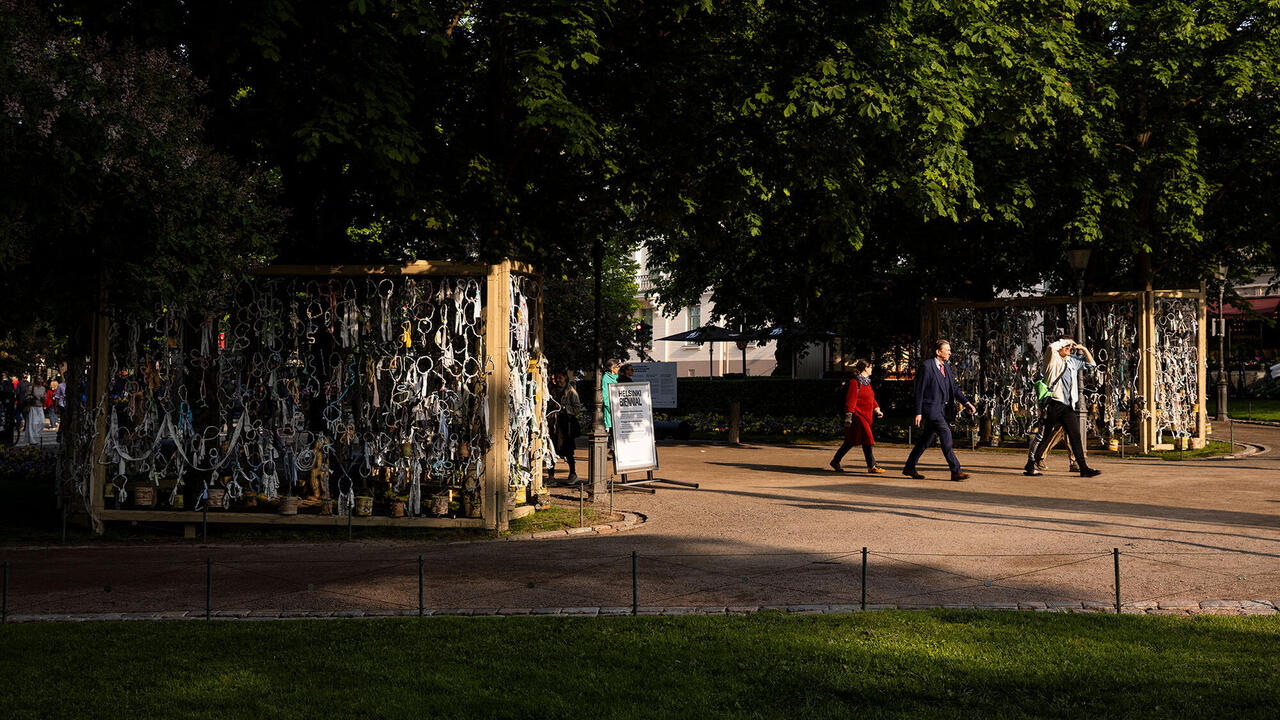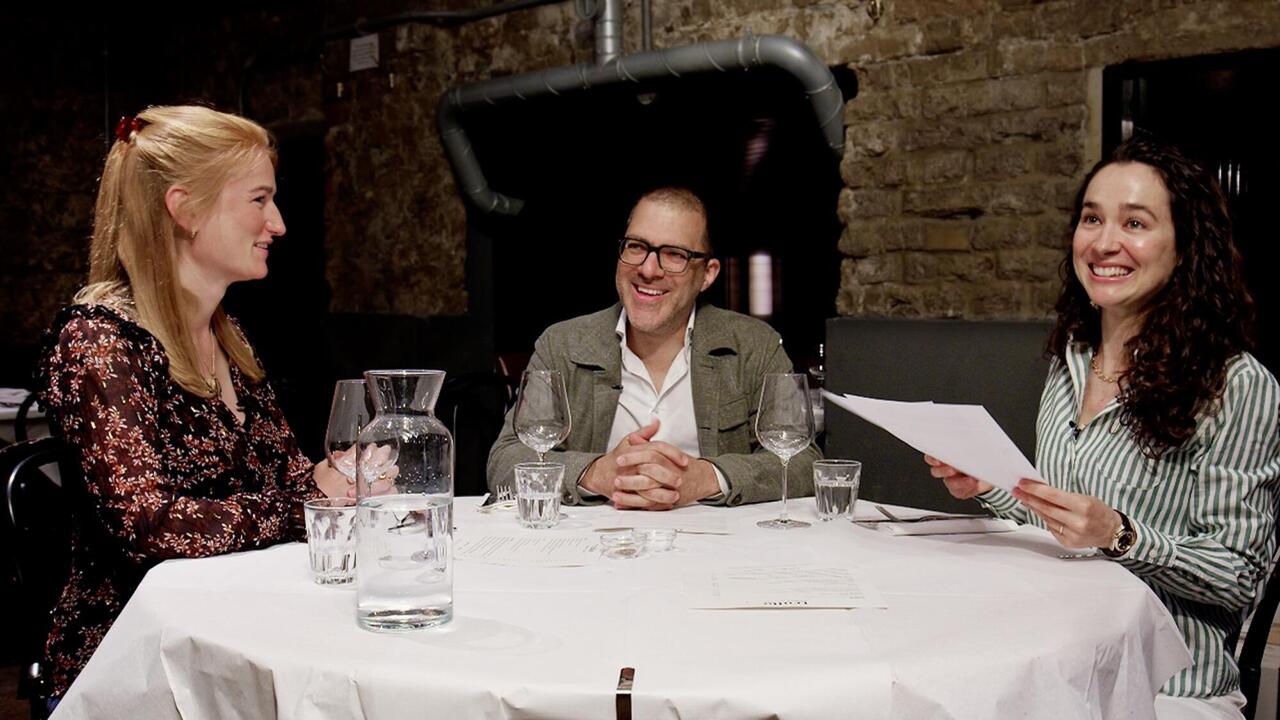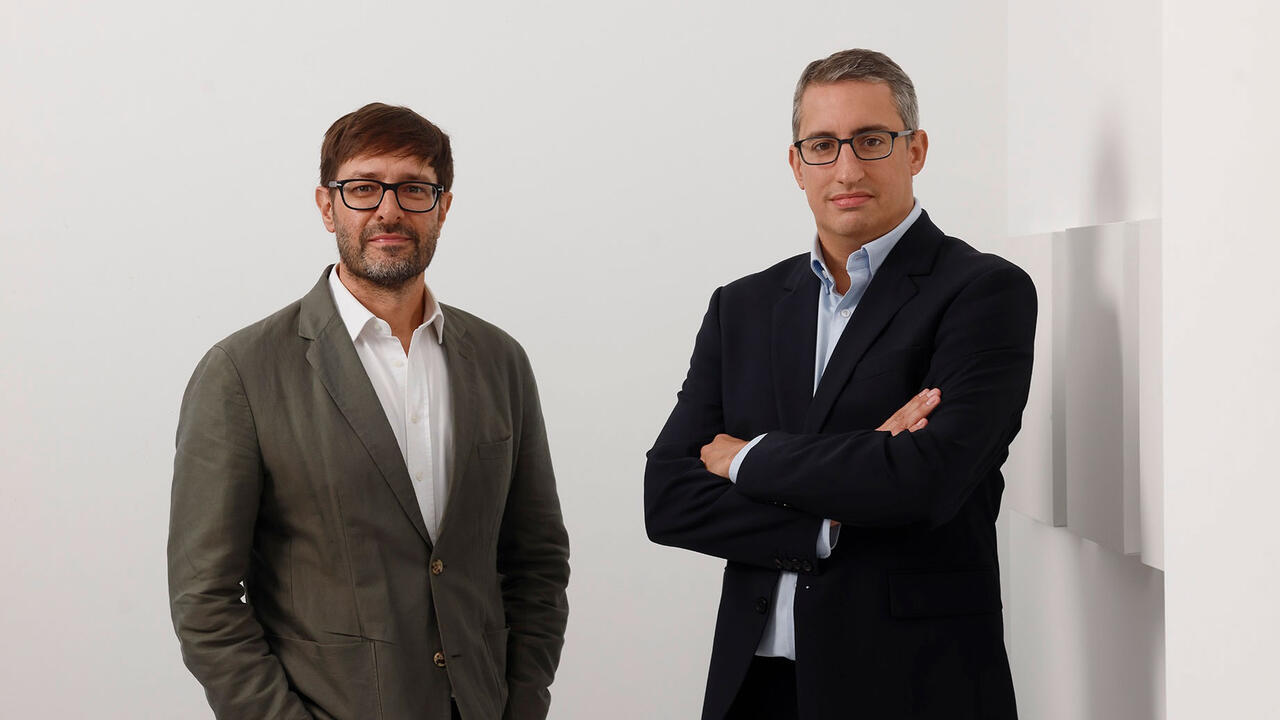Haus der Möglichkeiten
Okwui Enwezor, the new Director of Munichs Haus der Kunst, spoke with Jörg Heiser about civic cultural practices, from Munich to Cairo via Paris
Okwui Enwezor, the new Director of Munichs Haus der Kunst, spoke with Jörg Heiser about civic cultural practices, from Munich to Cairo via Paris

Jörg Heiser: What does it mean for you to move to Munich after living in New York for so long?
Okwui Enwezor: I'm incredibly energized by what Haus der Kunst offers as an institution. Its scale, programmatic complexity, the ways in which it has dealt with contemporary art and the historical specificity of its architecture are some of the major attractions, though by no means the only ones. Another point is related to my professional journey in Germany, where I've experienced a great level of hospitality intellectually, whether in Kassel as Director of documenta 11 from 1998 to 2002, or in Munich while curating 'Short Century: Independence and Liberation Movements in Africa, 194594' at Villa Stuck in 2001 and David Goldblatt's retrospective at Lenbachhaus in 2003. 'Cosmopolitanism' doesn't always have to reside in the cultural make-up of the people living in a city, although this is what makes New York culturally attractive. There are other maps —mental, imaginary— in the extensive intellectual and cultural networks that German institutions are capable of building. I don't know Munich very well yet, but I'm excited to be able to get to know it while developing this relationship to contemporary art and culture.
Jörg Heiser: Like your predecessor Chris Dercon, you come to Haus der Kunst as a foreigner, bringing new perspectives — and potential frictions.
Okwui Enwezor: Language is obviously a problem that I can't promise to overcome entirely, but I'll do my best to make sure that my ideas, instincts and intellectual values reach a broad segment of the population in Munich. Being a foreigner in a place is something that I've been almost all my life, so one learns to adapt, to listen carefully, to be implicated in the conversations in which cultural exchange is produced. Inevitably there will be misunderstandings, but one has to use them as generative structures for future conversation, future projects. I want to privilege three activities at Haus der Kunst — exhibitions, research and education — to unsettle some of the dead certainties that have accumulated around questions of cultural identity. That said, I dont think it's my role to respond constantly to the local situation — its just one of many things that can be part of building a credible programme. Local issues can produce productive tensions but also sometimes uninteresting kinds of nativism that are better to not get embroiled in.
Jörg Heiser: Dercon emphasized solo shows while your thematic exhibitions, such as 'Short Century', have a strong thesis.
Okwui Enwezor: You're quite correct in identifying where my own curatorial emphasis lies. The team at Haus der Kunst and I will need to strike a good balance between monographic and thematic exhibitions, but elaborating complex historical ideas will be a vital part of the programme — we're well into planning a number of such shows. Haus der Kunst is not a Kunstkammer but a non-collecting public museum: a centre of knowledge, of multiple traditions of thinking and philosophical reflection. That's why, apart from exhibitions, we will give priority to the discursive, the performative, etc. through debates, publications, screenings and research fellowships.
Jörg Heiser: Haus der Kunst is also a centre of aesthetic experience — with a difficult history as an iconic Nazi building.
Okwui Enwezor: I completely agree that the museum is a venue for aesthetic experience — and for contaminations that are cultural, social, artistic, intellectual, historical. But in terms of the unique history of Haus der Kunst, one must be careful not to make a fetish of this architecture and endlessly reflect on the frisson of its dark history. Im not saying Chris did — his idea of a critical reconstruction of the architecture was very important. But we must admit the fact that buildings have no subjectivity: you cannot put them on trial. It behoves us to think of the simple fact that the history of Haus der Kunst is defined not only by the eight years between 1937 and 1945 but also the 66 years after. Nevertheless we will do something substantial next year — the 75th anniversary of Haus der Kunst — to open up that dimension of the institution, to further what Chris started. Many people might not know that there are six staircases in Haus der Kunst, which can create multiple trajectories for the visitor, and while the building has been so generously opened by Chris, it remains to be opened even further.
Jörg Heiser: You're also curating the Paris 2012 Triennial Intense Proximity...
Okwui Enwezor: I'm working with a group of curators — Mélaine Bouteloup, Abdellah Karroum, Emilie Renard and Claire Staebler — and we are exploring intense proximity as a question. When the last exotic tribes have been discovered and when there are no more faraway places to explore — what happens? We then enter that zone of intense proximity, which is not always pleasant, it creates new disputes, new political jingoism. To give you a concrete example: in the winter of 2006, a group of right-wing activists in Paris opened a soup kitchen for poor people. They offered soupe au cochon — pig soup — a traditional soup in French cuisine. But offering only this kind of food is obviously intended to exclude people who for various cultural reasons have a culinary aversion to pork. I want to make an exhibition that also reflects on the historical ground where it takes place — from Le Grand Palais, built for the Universal Exposition of 1900, to the Palais de Tokyo, built for the International Exhibition of Arts and Technology of 1937. Then there are the glory years of French ethnography of the 20th century, with figures like Marcel Mauss, Claude Lévi-Strauss, Michel Leiris, André Gide, Jean Rouch and Marcel Griaule. It could be exciting to show the drawings and photographs Lévi-Strauss made during his time in Brazil in the 1930s. Whats really interesting against this background is the recurrence of the ethnographic in the work of artists such as Roy Villevoye, who has been obsessed with this question since the 1990s. Or Paris-based artists such as Mathieu Kleyebe Abonnenc and Camille Henrot. Or even Thomas Struths photographic series Paradise (19982006) — the irony in the flatness of so-called jungle landscapes stemming from very different parts of the world. Guy Tillims recent photographs of French Polynesia (Second Nature, 201011) complement Struths, since both of them play on clichés of the faraway while the paradise of unspoilt Eden has been completely ruined by human presence and habitation.

Jörg Heiser: If intense proximity implies the disappearance of a radically alien Other, do we need a new kind of self-ethnography?
Okwui Enwezor: Yes, absolutely, thats where the paradoxes come in. La Triennale is supposed to be an exhibition about the French art scene. Im not saying theres no value in reflecting on that scene, but Im sceptical if such reflection produces any kind of meaningful articulation of the complexity of the global processes that France is part of from the invasion of Libya to the proscription against the burkha. In order to untangle that quandary, were working with many interlocutors, a number of small-scale institutions around Paris, in a series of concentric circles, with Palais de Tokyo as the nerve centre and then going outwards into the suburbs...The point is not to make an exhibition about the French scene but to be located in it, to be present within it.
Jörg Heiser: Artistic interventions in banlieue immigrant communities can smack of symbolic aid...How do you tackle that?
Okwui Enwezor: An important concern for us is to avoid instrumentalising these locations simply because of the ethnographic resonance they may bring to the project. We do not want to play with localism for the sake of localism. Thats why we dont want to bring something unique to the place or involve the natives in projects that reflect their local subjectivity. Its not about us intervening in the small-scale institutions well be collaborating with but about having them intervene into ours.
Jörg Heiser: You also head the Meeting Points 6 project linking Middle Eastern, North African and European cities...Did you start before the Tunisian revolution?
Okwui Enwezor: Yes, I was invited in 2009 by the Young Arab Theatre Fund, a small dynamic organisation in Brussels headed by Tarek El Fetouh. I visited Beirut, Damascus, Amman, Ramallah, Tunis, Cairo and came across one quality in all of these places: an incredibly vital civic conversation. I was looking for ways to make it visible and decided to call my Meeting Points contribution Locus Agonistes: Practices and Logics of the Civic Locus Agonistes roughly translates as sites of struggle...I wanted the project to reflect what I call the emergence of a civic imagination.
Jörg Heiser: But who is part of that civic imagination and who pretends to be while supporting its suppression?
Okwui Enwezor: Theres never one good group and one bad group of people. Many different positions blend, which is not to say that things are murky or that no-one had a clear stance. Christine Tohme, director of Beiruts Lebanese Association for Plastic Arts, Ashkal Alwan, is involved in the attempt to set up a post-identitarian structure which negates the sectarian boundaries that carved up Lebanon for so many years. In Damascus, there are no such things as independent spaces because, to be independent, you must be granted that independence by the state. In Syria, you find some of the most radical practitioners, playwrights and filmmakers, like the late Omar Amiralay. They resist the state but still adapt to situations on the ground and work, if not with state institutions, then with individuals within them. Of course its important to be aware of co-optation. When the Jasmine Revolution began last year in Tunisia, all of us working with Meeting Points 6 found ourselves in the thick of civic realignments. It was exciting but also required drawing back, not rushing headlong into situations we didnt understand. In places like Tunis, Cairo and Alexandria, we turned the presentation of projects and performances and exhibitions into an open-ended forum many of the people we work with were more interested in conversations than in display...We had to postpone an event in Damascus because we could not guarantee the safety of the invited artists, or the autonomy of the project. But it was inspiring for me when 15 young Syrian artists took taxis from Damascus to attend a talk we organized in Beirut.
Jörg Heiser: Do you have an ironic ethnographic perspective on Munich?
Okwui Enwezor: Youre trying to get me into trouble with that question! (laughs) I dont have anything particular in mind about the ethnography of Munich, but if there are things worth examining why not? Next year, Im doing a Munich-specific project about Manfred Eichers record label ECM, which recorded Steve Reich, Art Ensemble of Chicago, Meredith Monk and many, many others. I want to link this avant-garde impulse which is part of Munich but has a global reach to contemporary artists working on sonic experimentation and improvisation, which have been the hallmark of ECM recordings since 1968. Take Stan Douglas Hors-champs (1992) or Steve McQueens Girls, Tricky (2001), pieces by Anri Sala or Renée Green...We'll do a music performance programme and explore the long-standing collaboration between ECM and Jean-Luc Godard, between Eicher and Peter Zumthor, or the recent collaboration between ECM and Ricardo Villalobos and Max Loderbauer. So this project is more than an exhibition its a cultural archaeology.















